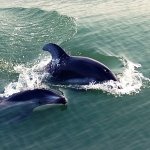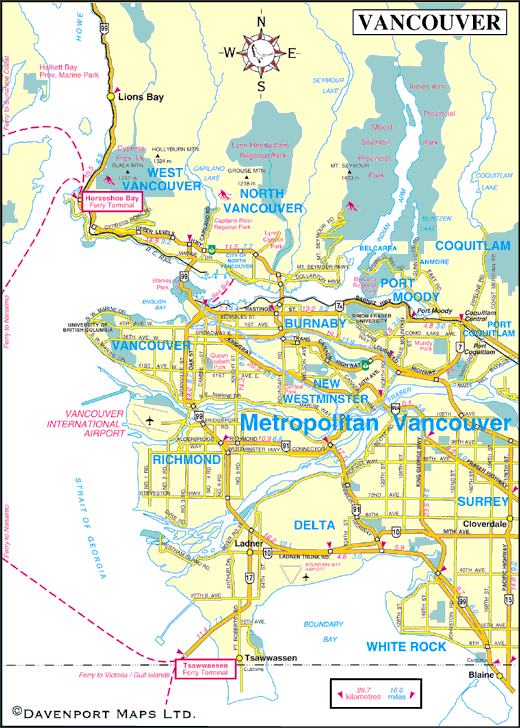Premier Listings for Steveston
Down on the southwestern shore of Richmond sits the historic Steveston Village, a once-boisterous frontier seaport and principal port on the Fraser River, founded in 1889 by William Herbert Steves.
At the turn of the twentieth century, Steveston was the busiest fishing port in the world, with fifteen salmon canneries, six hotels, numerous saloons and gambling dens, and up to fourteen windjammers simultaneously loading canned salmon for world markets. On a Saturday night, 10,000 people thronged the boardwalks, including Native Indians, Japanese, Chinese, European immigrants, and sailors from the seven seas.
Now over 100 years old, Steveston has evolved into a picturesque working fishing village, home to Canada’s largest commercial fishing fleet, home base to more than 600 seiners, gillnetters, trawlers and other vessels that line the docks two, sometimes three, abreast.
The village, with its ambient fishing village atmosphere, comes to life each summer, with plenty for visitors to see and do. Heritage sites and parks, fresh seafood, great local restaurants and colourful gift shops and markets all await the lucky visitor.
Location: Steveston is located on the Strait of Georgia, southwest of Richmond on the Lower Mainland of BC, 15 miles (24 km) south of Vancouver.
[FAGP id=26612]
One of the oldest remaining buildings in Steveston is The Cannery Cafe, built before 1900 to serve as a cookhouse for the Lighthouse Cannery, and now one of the longest-running restaurants in the village.
The Gulf of Georgia Cannery Site on Fourth Avenue directly behind Canfisco, is operated by a group of community members and representatives of the local fishing industry and contains relics from the past, when the canneries operated day and night. A model of a 1930s production line is set up along one long L-shaped counter. Murals of fish and trawlers cover the walls; showcases full of glass net floats from Japan, various shiny salmon tins, and model boats help convey a sense of Steveston’s heritage. Mountains of fishing gear and nets are arranged outside. The interpretive centre is open from May to mid-October. Admission includes a 20-minute film presentation in the Boiler House Theatre.
Visitors can take a self-guided walking tour of the National Heritage Site of Britannia Heritage Shipyard, at the south foot of Railway Avenue. Britannia is one of the few surviving examples from Steveston’s rich past, when a mix of canneries, net lofts, boatyards, residences, and stores defined the neighbourhood. Restoration of the site is in the development stage, and over the coming years much of its former glory is slated to be restored. At present, the Britannia Shipyard augments a walking or cycling tour of the Steveston harbour. Also on site is the Murakami Visitor Centre, the 1885 home of a 12-member Japanese family and their boat works, where the family built gillnetters during turn-of-the-century winters.
In the heart of old Steveston Village is the Steveston Museum. Surrounded by board sidewalks, this former Northern Bank building reflects the community’s heritage as a busy commercial centre. On the main floor the Bank Manager’s office displays the nineteenth century furniture, business machines, and other displays reflecting the services of the old general stores. Upstairs, the dining room and bedroom represent the living quarters of the earliest bank staff who also doubled as night watchmen and caretakers. Japanese and Chinese artifacts illustrate the impact of these cultures on the history of Steveston. Photo displays capture some of the heritage of one of the oldest fishing harbours on the Canadian west coast.
Fisherman’s Wharf: Visit Fisherman’s Wharf on The Landing, and the Visitor Centre Kiosk, where a caretaker is on hand on sunny weekends to answer visitor’s questions.
Constructed in 1894 as the Sockeye Hotel, the Steveston Hotel was one of the many hotels that flourished in the community during the early decades of the century, and is the only hotel to survive both fire and flood.
Time stands still as you venture through the doorway of the historic London Heritage Farm. Built during the 1890s, this fascinating heritage site on nearly 5 acres overlooking the south arm of the Fraser River offers the visitor a hands-on experience of rural life in the early development of Richmond. Surrounding the house are vagrant herb and flower gardens, and other attractions that include the restored Spragg family barn, and a hand tool museum.
Finn Slough on Lulu Island in the Fraser River has a special history and is one of the last tidal communities on the West Coast. Attracted by the lush green meadows in 1892, Mikko Hihnala (known as Mike Jacobson) and several others moved to Lulu Island to raise their families. One of the main roads, still in use today, was given the name Finn Road to recognize Jacobson’s family roots. While Jacobson was one of the first Finnish fishermen, many people emigrated from his village and Finn Slough was born. The village contained around 70 households in the 1940s, while approximately 50 people now live in Finn Slough, including three families descendant from the original settlers.
By the 1970s the original settlers were dispersing. Non-Finnish fishers and people who appreciated the Slough’s unspoiled historic appearance began to replace them. The Finns eventually stopped living at water’s edge and moved to more permanent homes within a few kilometres of the Slough. Bounded on the Fraser River side by Gilmore Island and on the north by a dyke, the Slough, was built to protect Richmond. Access to homes on the Gilmore Island side of the Slough is by a wooden draw-bridge. The unique and eclectic dwellings are neighbourly and built on a human scale. They either float or are supported by pilings with the tidal waters of the Fraser River rising and falling beneath them. Some of these homes are converted old net sheds and some are the original scow houses used by the Finns.
West of Steveston Village is the popular Garry Point Park, a short walk from the Gulf of Georgia Cannery Museum. Smooth walking and biking trails offer wonderful sweeping views of Steveston’s fishing harbour and the Gulf Islands, set amongst pastoral wildflower meadows and pale sandy beaches.
Golf: The Richmond area offers a number of golf options: Greenacres Golf Course has earned the reputation for quality and excellence that few public courses can match. The beautiful 6,022-yard course is immaculately maintained, lined with lush trees with just enough water hazards and elevated greens to give anyone’s game a good test. Open year round with a par 71 for men and a par 73 for women. At Mayfair Lakes Golf & Country Club the Westcoast scenery, high standard in course conditioning, and beautiful surroundings combine to offer a world-class golf experience, conveniently located only minutes from the Vancouver airport. Richmond Country Club offers a championship golf course that entices both the avid and recreational golfer. The long fairways, manicured greens, and delightful vistas of woods and lakes serve to enhance this pleasure. Richmond Country Club’s golf and racquet facilities are devoted to encouraging family participation. Quilchena Golf and Country Club prides itself in being a course of exceptional quality and playability for any level, offering 120 acres of golf with five sets of tees allowing for up to 6,665 yards of play. In the area, Ladner offers the challenging 9-hole Covelinks Golf Course on Admiral Boulevard. Golf Vacations in British Columbia.
Fishing: Try your hand at fishing from the municipal pier that juts out into the Fraser River at Gilbert’s Beach beside the South Arm Dyke Trail at the foot of No. 2 Road, just east of the Steveston harbour.
The annual Steveston Salmon Festival, dating back to the 1940s, attracts tens of thousands of people to Steveston. The festival parade winds through the village streets before proceeding down Moncton Street, food concessions offer an assortment of ethnic dishes, lively musical performances are staged, before festivities wrap up with a fireworks display at dusk at Garry Point Park.
Circle Tours: See the best of the area on a driving Circle Tour. Head north out of Vancouver for the scenic Sunshine Coast and Vancouver Island Circle Tour, or stay on the intensely scenic Sea to Sky Highway, passing through the magical winter resort town of Whistler and Coast Mountains Circle Tour. To explore the rural farmlands and forests of the fertile Fraser Valley, take the Fraser Valley Circle Tour, travelling outbound on the scenic route north of the historic Fraser River, returning westwards along the Trans Canada Highway 1 to Vancouver. Circle Tours in British Columbia.
Premier Listings

Biographical Info
Steveston Seabreeze Adventures offers exciting Westcoast ecotours from historic Steveston, 30 minutes south of Vancouver – you don’t have to go to Vancouver Island to see the whales! Travel the scenic Fraser River and tranquil Gulf Islands; Go whale watching, wildlife viewing and bird watching around beautiful Vancouver; embark on a guided fishing adventure; or rent a bike and discover by bicycle tour the magical beauty of historic Steveston fishing village. Book your whale watching or Eco Tour today.

Biographical Info
Vancouver’s Most Experienced Whale Watching Company offers 3 to 5-hour tours and is the only company from Vancouver with zodiacs. First-class vessels: choose between the open or the semi-enclosed style of zodiac. For the adventure of a lifetime, travel through the spectacular Gulf Islands and San Juan Islands to watch the magnificent Orcas. Professional naturalists interpret each trip. We emphasize science and conservation while maintaining a fun and professional atmosphere. Shuttle service available from Vancouver to the departure point in Steveston.





